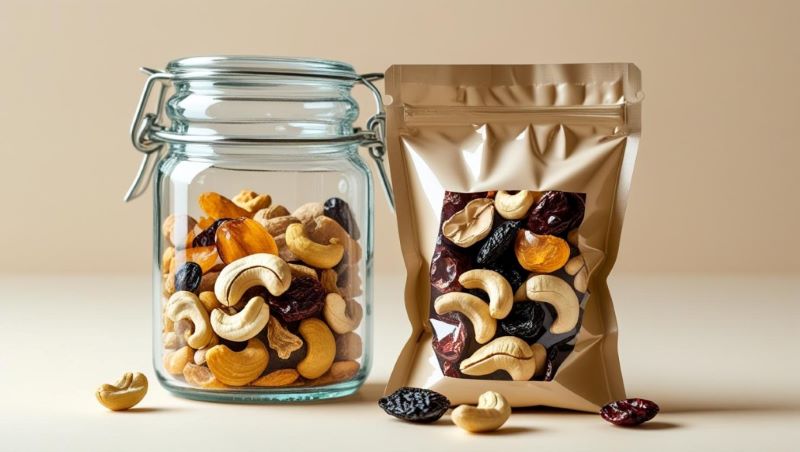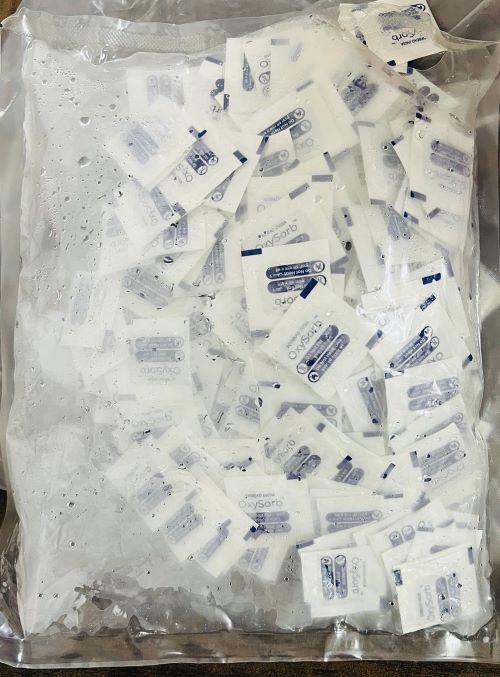Top 9 Mistakes People Make When Using Oxygen Absorbers and How to Avoid Them
Oxygen absorbers are a game-changer tool specially made for maintaining freshness and prolonging the lifespan of food items prone to spoilage, as well as sensitive items. Nonetheless, a lot of individuals make silly errors while using it. These missteps can impact the efficiency of such tiny but powerful oxygen absorber packets for food. Whether you’re new to food storage or a seasoned pro, knowing the reasons for oxygen absorber failure reasons is significant in ensuring that your OxySorb works just right.
Understanding how to use Oxysorb properly is needed for make the most of food shelf.
In this post, we’ll uncover the top 9 oxygen absorber mistakes you might be making and provide practical tips on avoiding them, so you can keep your stored goods fresh, safe, and long-lasting.
Mistakes
1 Neglecting the correct and proper absorber kind
The mechanisms of an oxygen absorber could amazingly differ, Subject to how it will be utilized. Therefore, it is indispensable to select the precise one for your packaging requirements. The finest appropriate absorber kind can significantly influence the outcome and ensure that they are completely moisture-free or do not give issues related to water vapour at the time of shipping.
How to avoid it:
There are various kinds of oxygen absorbers obtainable, but their core elements typically include carbon, iron powder, sodium, and so on. Thus, for optimal results, ensure you use the proper oxygen absorber.
2 Using the wrong size oxygen absorber
Size is the most crucial factor in determining common mistakes with oxygen absorbers, for your food not to get spoiled or spill choosing the right size oxygen absorber is crucial. Here’s the deal: using a small oxygen absorber in a large container can leave extra oxygen. This extra oxygen can invite mold, fungus, and oxidation. Alternatively, if you buy large absorber can be wasteful and unreasonably upsurge your incidentals without offering any extra advantage.
How to avoid it:
To avoid this common mistake, cautiously align the absorber size with the nature, container volume, and product type you are storing. Always go through the manufacturer’s guiding principles and understand the features, such as the effectiveness of the seal and the presence of remaining oxygen.
3 Intended for wet or fluid food products
Oxygen absorber packets are perfectly made only for dry foods. It is not recommended to use in a semi solid, wet or fluid food substance. As Iron powder is a key part of oxygen absorbers. It can respond with liquid food and further can lead to injurious effects. Oxygen absorbers go bad which may oxidize early upon contact with moisture and lump up together inside the packaging.
How to avoid it
· It is advised not to use oxygen absorbers exclusively with dry foods and discard them once used.
· Evade exposure to moisture
· Store in impermeable containers.
· Pack where the humidity is less
· Single-use only
4 Not Using Airtight Containers
Leaving oxygen absorbers open too long is not advised. It is necessary to use oxygen absorbers correctly in the non-airtight containers, such as sealed jars that are not so tight, and in bags that have zips. If the air leaks, this can be dangerous.
The reason is that the oxygen absorbers are not able to function effectively. They function better when these oxygen absorbers absorb the oxygen all over them till they are saturated.
How to avoid it
Make use of high-quality bags such as vacuum-sealed bags or Mylar bags. Using airtight glass jars is also acceptable. Keep in mind to use the intact seal of a container. If you want to get the best results, ensure to use the packaged oxygen absorbers, which do not catch moisture & air.

5 Improper Sealing Techniques or Faulty Mylar Bags
You can access oxygen-barrier bags that are obtained in various thicknesses and sizes. This will help keep various storage requirements. If the bags are not sealed properly, then air will enter. If it happens, it makes the bags worthless.
How to avoid it
It is advised to make use of a top-quality sealer. It is necessary to check the seal twice and be alert to the leaky air even after it is sealed. This will help you safeguard oxygen from being wasted by the absorbers. Most importantly, this helps prevent goods from getting spoiled.
6 Exposing Oxygen Absorbers to Air before Use
While using the oxygen absorbers, a mistake that most people make is exposing Oxygen to the air before use.
Oxygen absorbers work when oxygen is removed from the sealed surroundings. This helps keep the stored products fresh and they can be used for many years. When the oxygen is exposed to open air, it starts to absorb the oxygen at once. Oxygen Absorbers pack turnout to hard & fill hot and release moisture.

How to avoid it
To keep this problem away, keep oxygen absorbers sealed until you use them, and keep all storage materials ahead of time. Remember oxygen absorbers will not work if it's kept open for a longer time. This can destroy the storage of food. You can see mould growth and pest' infestation in the storage products.
7 Using Expired or Damaged Oxygen Absorbers
It's also important to keep track of the lives of oxygen absorbers because old or expired ones won't work, which wastes time and makes the product less effective. For instance, you locate an old pack of oxygen absorbers in your cupboard that you bought two years ago. They are hard to use and don't lower the oxygen level as intended.
How to avoid it
To prevent this mistake, constantly examine the packaging for the expiration date before using it and look for any apparent harm on every oxygen absorber packet.
8 Chemical interference or interaction concerns
Cross-contamination occurs when acidic food or moisture comes into contact with oxygen absorbers. This can trigger their efficacy or cause unexpected side effects.
How to avoid it
If you're wondering how to use OxySorb correctly, then handle it with clean and dry hands. Never contact them with something that may add pollutants.
9 Reusing Oxygen Absorbers
It is a major mistake to reuse oxygen absorbers. Reusing might look like it is a money saving move but it’s a big no. It will only give you premature spoilage, faded flavour, unwanted change in texture, and lastly pose foodborne illness.
How to avoid it
To avoid this mistake, fresh oxygen absorbers should always be used for each new food storage project. After use, label or throw away the oxygen absorbers right away. This way, you won't mistakenly use them again.
Wrap up: Use Oxygen Absorbers the Right Way
Oxygen absorbers are essential components for long-term food storage, but then again, they must not be misused. Picking up the correct size ensures airtight sealing and stops moisture contact.
When you know how oxygen absorber’s function and if you avoid the above-mentioned common mistakes, your food will remain safe and consumable for months and even years.
FAQ
Do Oxygen Absorbers Expire?
The short answer is yes; just like everything has a life that ends, oxygen absorbers expire, too, even if you haven't used them! The oxygen absorbers can live up to 1-2 year; after that, they will expire. It depends on manufacturers.
How do I Check if my Oxygen Absorber is Working Properly?
Feel the packet; it should be soft and powdered, vacuum sealed, and the expiration date and effectiveness checked. Also oxygen absorbers packets come with oxygen indicator, if it is pink colour so products is good but ,it show blue colour means it is absorber oxygen here is testing view
Can I reuse oxygen absorbers?
No, you can only use oxygen absorbers once. They stop working once they have absorbed oxygen and can't be turned back on.
What is the lifespan of oxygen absorbers once opened?
Oxygen absorbers start functioning quickly after they are exposed to air. Their lifespan is very short, like 15 to 30 minutes in the open air.
Can oxygen absorbers cause food to go bad?
Only if not used correctly. Using it with the incorrect kind of food or expired or used absorbers might encourage rotting rather than prevent it.





